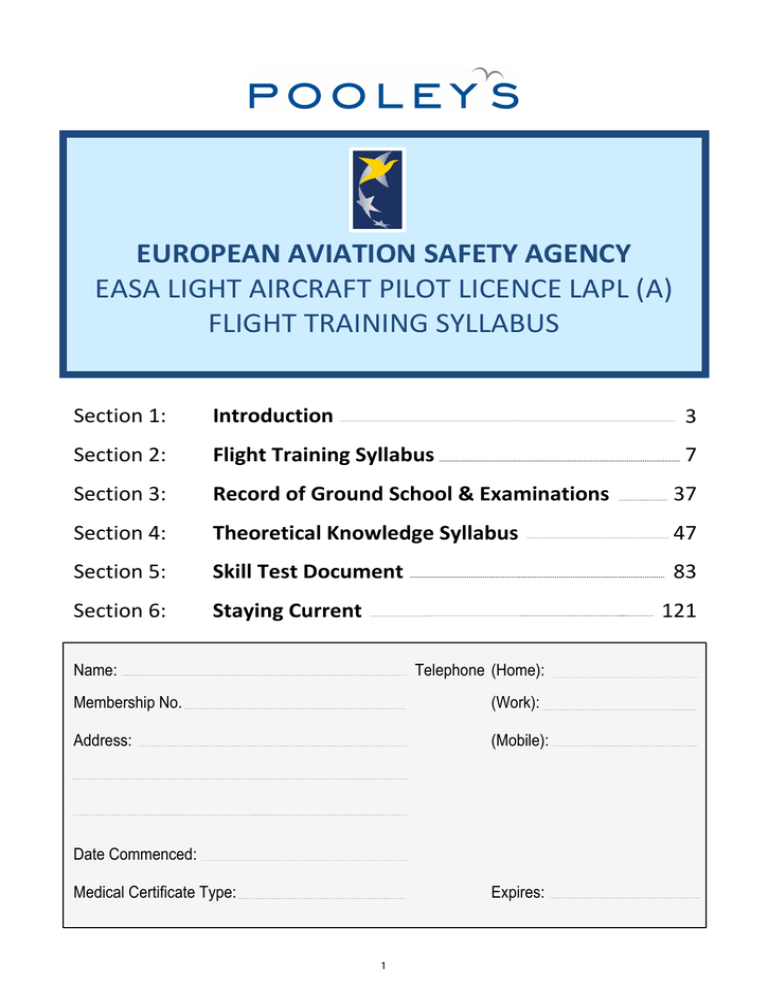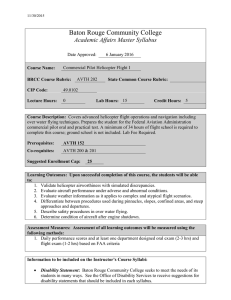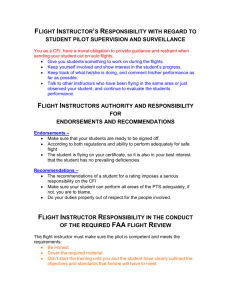
EUROPEAN AVIATION SAFETY AGENCY EASA LIGHT AIRCRAFT PILOT LICENCE LAPL (A) FLIGHT TRAINING SYLLABUS 3
Section 1: Introduction Section 2: Flight Training Syllabus Section 3: Record of Ground School & Examinations 37
Section 4: Theoretical Knowledge Syllabus 47
Section 5: Skill Test Document 83
Section 6: Staying Current 7 121
Name:
Telephone (Home):
Membership No.
(Work):
Address:
(Mobile):
Date Commenced:
Medical Certificate Type:
Expires:
1
Nothing in this manual supersedes any EU legislation, rules or EASA regulations or procedures and any operational
documents issued by The Stationery Office, the Civil Aviation Authority, National Aviation Authorities, the manufacturers
of aircraft, engines and systems, by the or operators of aircraft throughout the world. Note that as maps and charts are
changed regularly, those extracts reproduced in this book must not be used flight planning operations.
Copyright © 2015 Pooleys Flight Equipment Limited.
The European Aviation Safety Agency,
Light Aircraft Pilot Licence Flight Training Syllabus
and Students Record of Training.
ISBN 978-184336-236-4
First Published November 2015
All rights reserved. No part of this book may be reproduced or transmitted in any form by any means, electronic or
mechanical, including photocopying, recording or by any information storage and retrieval system, without
permission from the publisher in writing.
Pooleys Flight Equipment Ltd
Elstree Aerodrome
Hertfordshire
WD6 3AW, UK.
Tel:
Email:
Web:
+44(0)20 8953 4870
sales@pooleys.com
www.pooleys.com
2
SECTION 1: INTRODUCTION BECOMING A PILOT Every pilot begins as a student pilot, whether the aim is to fly for a hobby or to fly for a career. Learning to fly does not take long – within the first 20 hours of flying training you will have learned the basic skills. Since the training period is so short, good habits must be developed right from the start. Patterns formed in the first few hours will stay with you throughout your flying life, and so, to gain the maximum benefit from each hour in the air and to develop good habits, you should be well prepared. This syllabus will help you to do this. An advanced formal education is not a requirement to become a pilot, although use of the English language is required for radio calls as is a knowledge of basic mathematics. Beyond that, no special academic skills are required. It is worth making a note of the fact that you must hold a valid Part-­‐MED LAPL Medical Certificate; or a Class 1 or Class 2 Medical Certificate, before you are able to go solo. This can be done through an EASA approved medical examiner. The purpose of this document is to guide you through the EASA LAPL (A) training syllabus and is a written record of your progress for the period of your training. Guidance from your instructor is invaluable throughout the training. However it is most important that you use the advice contained within these pages to maximise your efforts. It is too costly an activity to cut corners and disregard information that is vital to your success. The time scale to complete your training is of course the most uncontrollable factor. Unreliable weather means you cannot expect any plan or diary to proceed exactly to schedule. Therefore ‘poor weather’ days should be utilised to learn all about the many facets of light aviation. Safety is paramount and the acquisition of knowledge enhances this tenfold. Study may seem tedious at times, especially when all you really want to do is to get out there and fly but without the theory, the practical will become more costly. However, achieving your LAPL will rank as one of the greatest successes of your life and opens up opportunities to fly not only in the UK and Europe but also with further training you could find yourself on the path to becoming an Airline Captain. Good luck! MINIMUM AGE: 17 YEARS. MINIMUM TRAINING HOURS PPL DUAL SOLO TOTAL Hours 15:00 6:00 30:00 NOTE: The remaining minimum of 9 hours may be made up of dual or solo flying or could be credited from other licences. The flying training shall include no less than: a) 3 hours solo cross country time, including at least 1 cross country flight of at least 150 km (80 nm), during which 1 full stop landing at an aerodrome different from the aerodrome of departure shall be made. 3
EQUIPMENT NECESSARY FROM DAY ONE Throughout the LAPL course you will have to purchase some essential equipment. Below is a list of equipment you will need from day one: • Pooleys Log book • Pooleys Checklist • Pooleys Airfield Plate (taken from the latest Pooleys Flight Guide) • Fuel Tester • Pooleys Kneeboard and Log Pad • Sunglasses There are also the Air Pilot’s Manuals that you will require during your course of training and which are essential for the theory of the flight exercises and for the ground exams: • Air Pilot’s Manual, Volume 1 – Flying Training • Air Pilot’s Manual, Volume 2 – Air Law & Meteorology • Air Pilot’s Manual, Volume 3 – Navigation • Air Pilot’s Manual, Volume 4 – The Aeroplane Technical (Including Aircraft General Knowledge, Flight Performance & Planning and Principles of Flight) • Air Pilot’s Manual, Volume 5 – Radio Navigation & Instrument Flying • Air Pilot’s Manual, Volume 6 – Human Performance & Limitations and Operational Procedures • Air Pilot’s Manual, Volume 7 – Communications As you progress through the course you will be required to purchase other equipment as and when you need it, this includes: • CRP-­‐1 Flight Computer • NM-­‐2 16” Scale Ruler 1:500,000/1:250,000 • PP-­‐1 Protractor • Aeronautical Charts There may also be other equipment that you may want to purchase that you will also need sooner or later: • Personal Headset • Pooleys United Kingdom Flight Guide (latest edition) • A Flight Case Finally, for convenience, Pooleys supplies a Fixed Wing Student Starter Kit containing everything you need for your course and by purchasing everything together, you will make a considerable saving. CLOTHING TO WEAR While flying an aircraft we suggest you wear comfortable, functional clothing and footwear. Avoid high fashion clothing, as it is possible that you may get a little oil or dirt on them. 4
FOOTWEAR The soles should be quite thin so you can feel the rudder pedals properly. Flat soled shoes are recommended so they don’t pose a problem when doing the ‘walk-­‐around’ inspection and whilst entering and exiting the aircraft. 5



